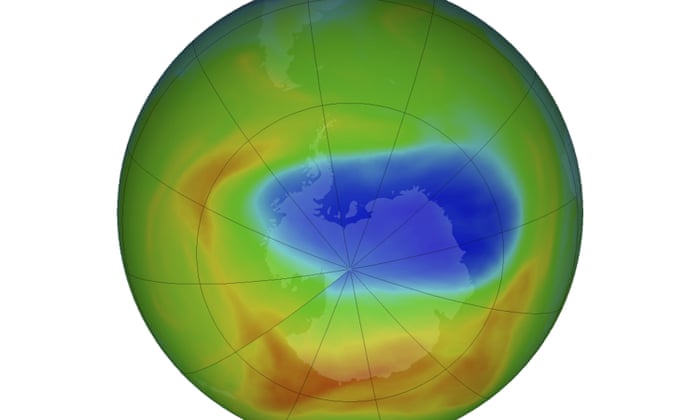
According to new research, the ozone layer hole over Antarctica may be growing, contradicting recent predictions that it was improving. The New Zealand researchers behind the study, which was published in the journal Nature Communications on Tuesday (Nov 21), said that ozone levels at the heart of the hole in the Antarctic springtime have decreased by 26% since 2004. The scientists arrived at their conclusion after studying the behavior of the ozone layer with a satellite instrument between September and November. According to the findings, six of the last nine years have had abnormally low ozone levels and extremely wide ozone holes across the region.
The hole has not only remained large in area, but it has also become deeper [i.e. has less ozone] throughout most of the Antarctic spring
Changes in the Antarctic polar vortex (a large swirl of low pressure and very cold air high above the South Pole) were highlighted as one of the primary causes of ozone depletion in the study. It went on to say that tiny airborne particles released by wildfires and volcanoes, as well as variations in the solar cycle, were also to blame for the depletion. “This means that the hole has not only remained large in area, but it has also become deeper [i.e., has less ozone] throughout most of the Antarctic spring,” said Hannah Kessenich, lead author of the study. “The especially long-lived ozone holes during 2020–2022 fit squarely into this picture, as the size and depth of the hole during October was particularly notable in all three years.”
The ozone layer is in charge of shielding life on Earth from the sun’s deadly UV rays. Following reports that the ozone layer over the lonely continent had been obliterated, numerous countries banded together in 1987 to restrict or phase out the use of more than 100 ozone-depleting substances. Earlier this year, the United Nations released a report claiming that the ozone layer would be totally healed within two decades as the amount of airborne pollutants degrading the atmosphere layer decreased.
Chlorofluorocarbons (CFCs), which were once widely utilized in aerosols and refrigerators, have been identified as the primary cause of ozone depletion. According to the paper, ozone-damaging chlorine decreased by 11.5% in the stratosphere between its peak in 1993 and 2020, while bromine decreased by 14.5% between its peak in 1999 and 2020.
